The KTM 390 Enduro R should serve as a bridge between MX and dual-purpose motorcycles. Does it?
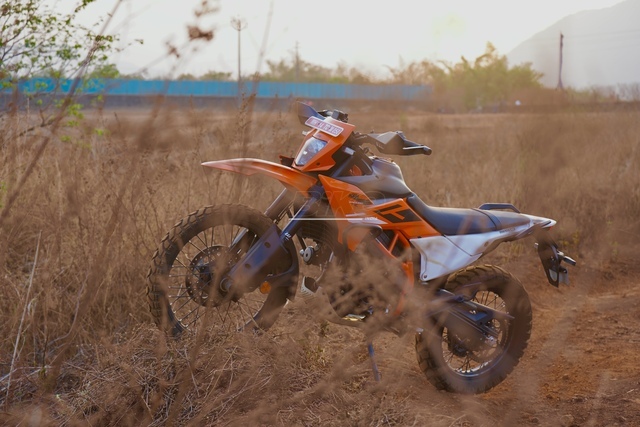
Story: Joshua Varghese
Photography: Kalidas M
KTM India should not have named this motorcycle the Enduro “R” because it is not equipped with the longer-travel suspension that comes with the R model overseas. Predictably, the motorcycle fraternity is not pleased that KTM India are trying to pass off what is essentially the “Enduro” as the “Enduro R”. We arrived at the Prodirt facility in Pune to experience this motorcycle and checking the capability of the suspension was on our agenda.
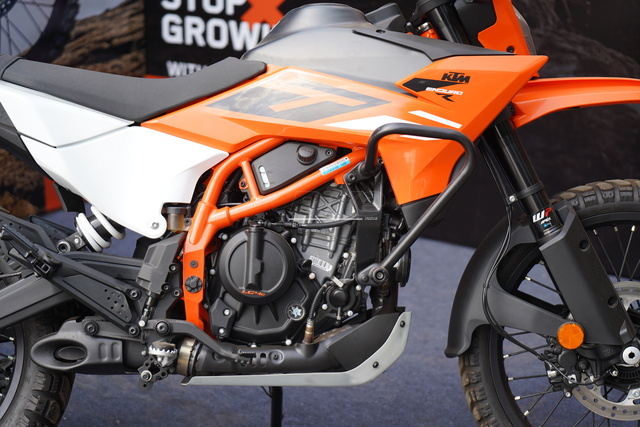
Most enduro motorcycles are inspired by their MX siblings but in this case, the 390 Enduro shares more with the other motorcycles in the 390 range. The engine, for example, is the familiar LC4c unit and in the Enduro also it develops 46 hp at 8,500 rpm and a peak torque of 39 Nm at 6,500 rpm while the six-speed transmission is equipped with a slick up-and-down quick-shifter as standard. The overall gearing is what sets the Enduro apart. Since it runs an 18-inch rear wheel, KTM had to lower the final drive gearing even more than the Adventure’s. The Enduro uses a 14/48 combination and this set-up enables it to work around the engine’s lack of low-end grunt and quickly rev into its powerful mid-range and top end. That is where the motorcycle properly comes alive and it takes very little coaxing to get the front wheel off the ground. That said, we are not fans of the ride-by-wire throttle. Its behaviour is unpredictable and quick reflexes at the left hand seem to be the only fail-safe method until the calibration is improved.
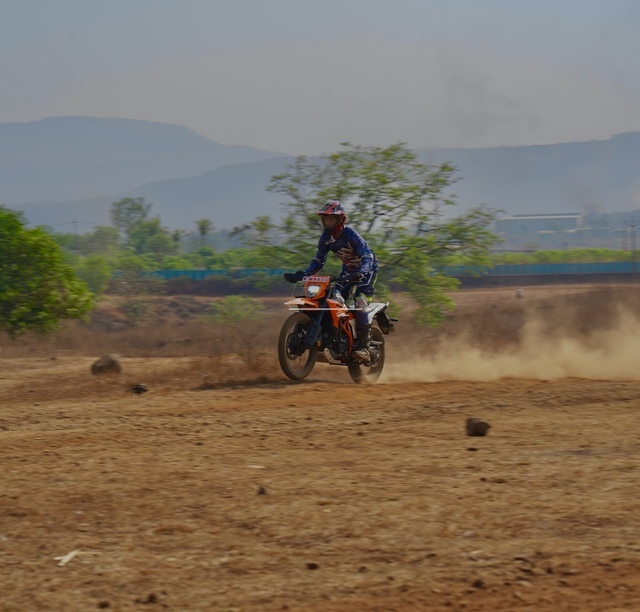
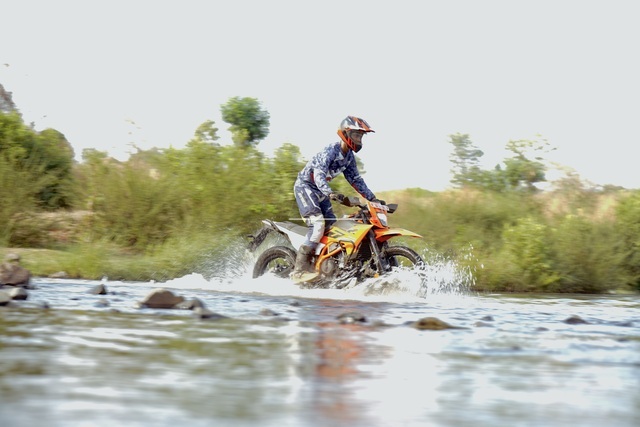
In “Offroad” mode, one has access to the engine’s full potential and also the sharpest throttle response. The power delivery is urgent and borders on the snappy but, in the right hands, the Enduro is a quick motorcycle off the line and an absolute hooligan. However, its violence may be somewhat overwhelming for beginners. For them, the “Street” mode’s relaxed power delivery and relatively gentle throttle response may be the best way to get acquainted with this motorcycle’s abilities. When needed, it is capable of pulling away from as low as 50 km/h in sixth gear but it is happiest when ridden at higher engine speeds. We find the refinement adequate for an off-road motorcycle but if one wants to spend a lot of time on the road, then there is noticeable vibration at the handlebar and foot-pegs; it is something one should be ready to deal with.
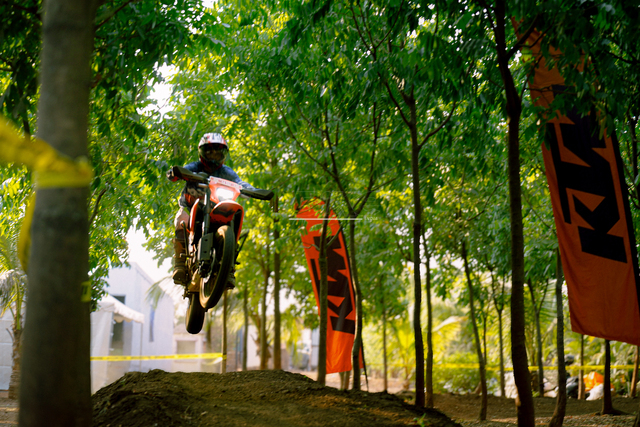
The Enduro’s weight of 177 kilograms makes itself felt at low speeds but fades away as the pace increases. The way it handles on the dirt is largely similar to the Adventure’s but the Mitas Enduro Trail+ tyres and the larger rear wheel give the Enduro an edge. While we appreciate its weight balance, this one is not a particularly stable motorcycle when ripping along trails at good speed and some more feedback from the front end could improve the experience, though it never got dangerously out of shape. Furthermore, one can use the throttle to bring it back in line quickly. This motorcycle demands vigilance and active input from the rider, which means they have to be skilled and in good shape to be able to ride fast without getting tired. Once the rider gets used to the way the motorcycle responds, it is a machine that will encourage the hooligan within each rider, urging them to push their limits every day. Also, it must be said that the quick-shifter made trail riding a bit easier.
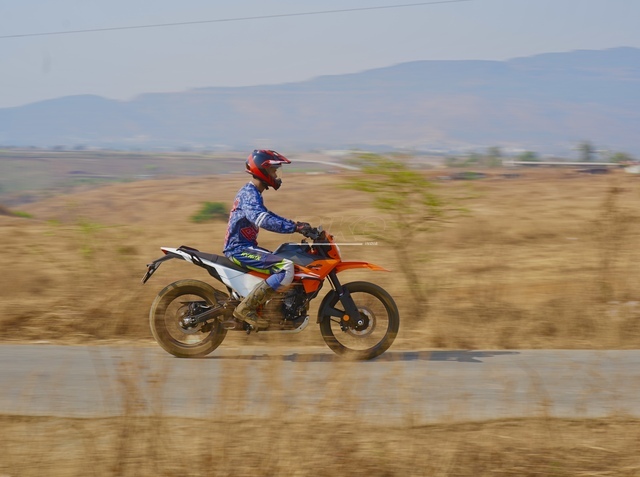
Honestly, we did not feel the need for the 230-millimetre travel suspension sold abroad. KTM claim they have made modifications to the Adventure’s suspension equipment and it does the job well even at pace over unruly surfaces. On its firmest setting, the suspension bottoms out only when landing huge jumps and if one is skilled enough to do that, maybe, wait for the actual R model with the better suspension that will follow soon. For everyone else, the current set-up is capable and compliant. The ABS button on the handlebar is a quick and useful way to disengage ABS and allows experienced riders to make the most of the Enduro’s stopping power, which is adequate to shed speed quickly and even get some sunshine under the rear wheel. Thankfully, the settings do not get reset when the ignition is switched off. On the road, this Enduro is no corner-carver and although the adjustable suspension allows one to fine-tune the ride quality, the 50/50 nature of the tyres has limitations in terms of noise and ride. Of course, these are observations we made on a good stretch of road. Over bad or broken roads, this motorcycle is right at home.
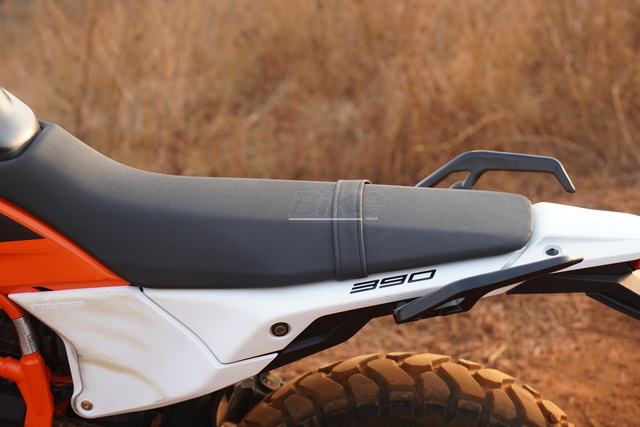
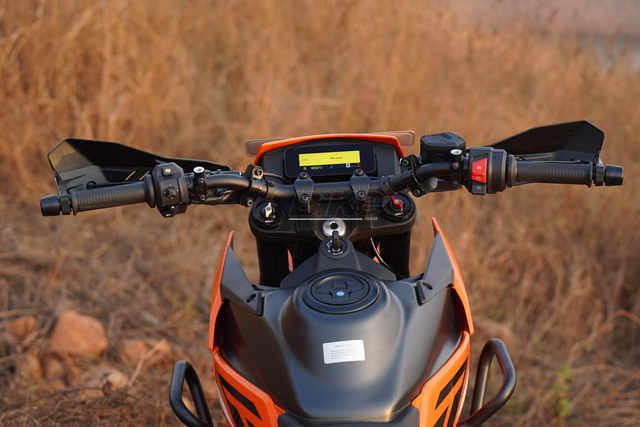
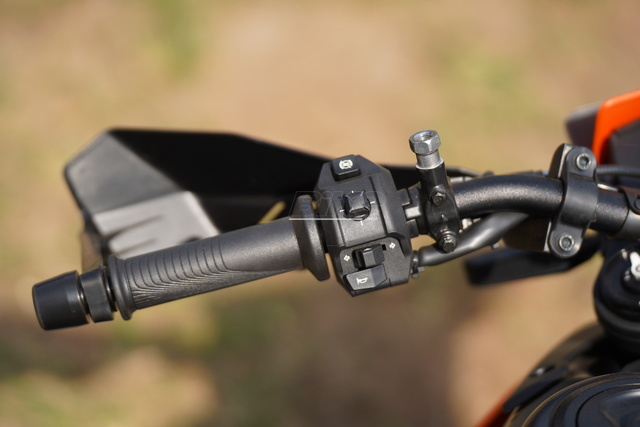
The seating position is marginally different as compared to the Adventure and, as a tall rider, I found it more accommodating and versatile than the Adventure’s. Following a short ride on the trails, the camera man announced that it was among the most comfortable pillion experiences he had ever had. As someone who is not a fan of digital instrument clusters, I found the one on the Enduro tasteful. It is a compact unit that displays just the essentials with no distractions and the simple joystick facilitates easy navigation through the menus.
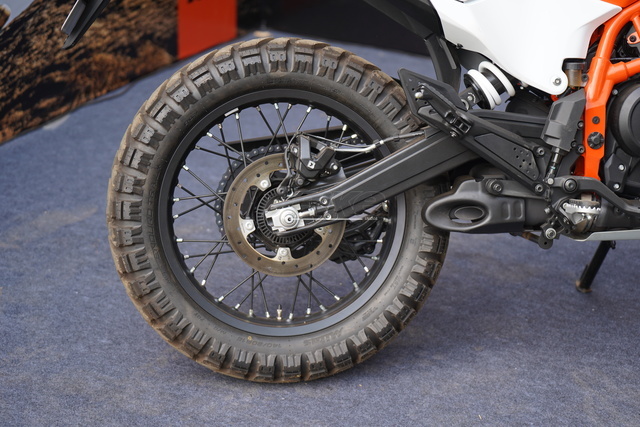
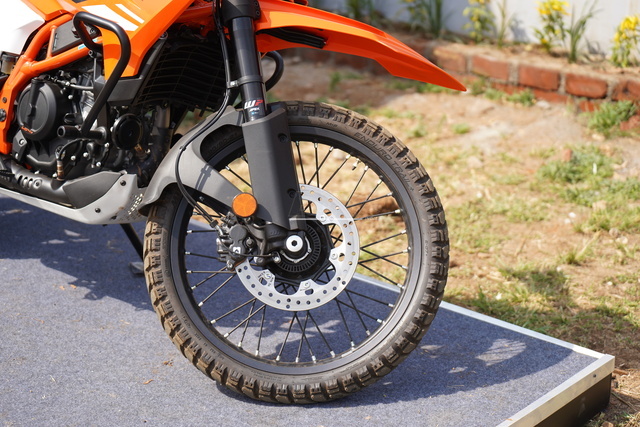
The Enduro uses a 21-inch wheel at the front and an 18-inch one at the rear. However, these are not sealed rims like the Adventure’s and it actually may be better for hardcore enduro riders, for they do not have to fear getting stranded due to a bent rim. Since there are no changes in the frame or the subframe, it is unsurprising that the rear of the Enduro is largely identical to the Adventure’s but it is the front that gives this motorcycle its own identity. The fuel-tank is smaller, the front is slimmer, and the headlight is a smaller unit. Overall, it looks like a motorcycle that means business when it sees the dirt. We noticed that some parts of the white panels turned yellow after a few hours of riding. Interestingly, even after cleaning, those did not return to the original white colour.
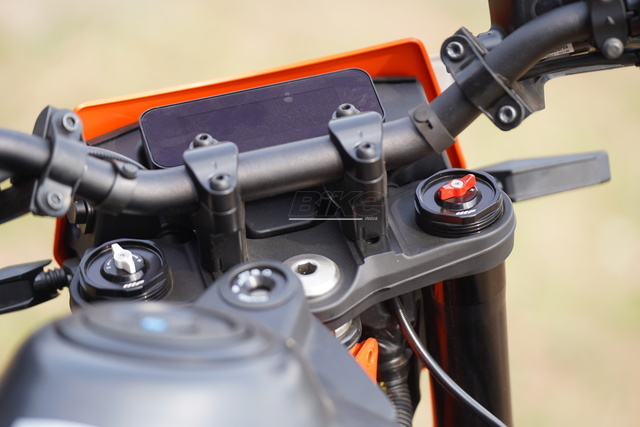
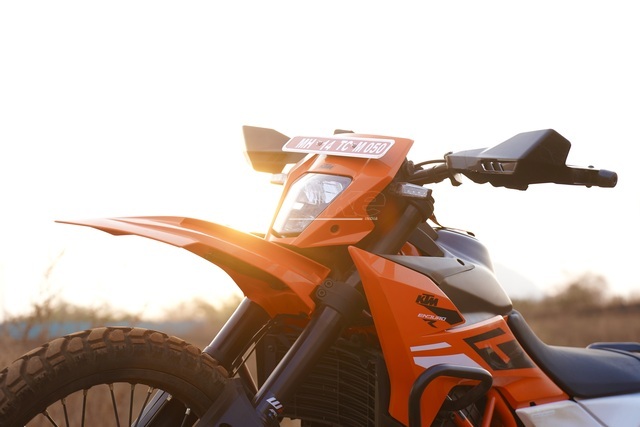
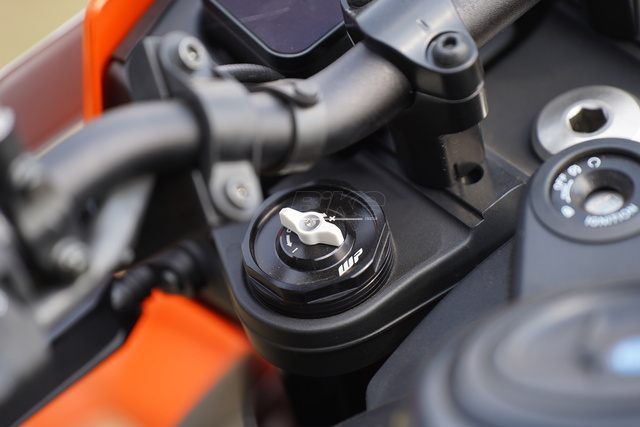
Given that it does not have the comprehensive electronics suite of the 390 Adventure, the KTM 390 Enduro R is reasonably priced at Rs 3.37 lakh (ex-showroom). Having experienced the kind of thrills it is capable of delivering, we feel that is a reasonable asking price. Simply because its nearest alternative is the smaller but more purposeful Kawasaki KLX 230 that costs Rs 3.30 lakh (ex-showroom).
The Enduro is not a motorcycle that will be appreciated by the average rider. This one is for those who have not bought an MX motorcycle because it costs an arm and a leg. Enduros exist to bridge that gap by offering similar levels of fun in a package that one can use on the road too. Among the current ADV and dual-purpose motorcycle enthusiasts in India, there are riders who are willing to sacrifice some on-road ability in favour of more competence in the dirt and they are likely to be the Enduro’s first customers.
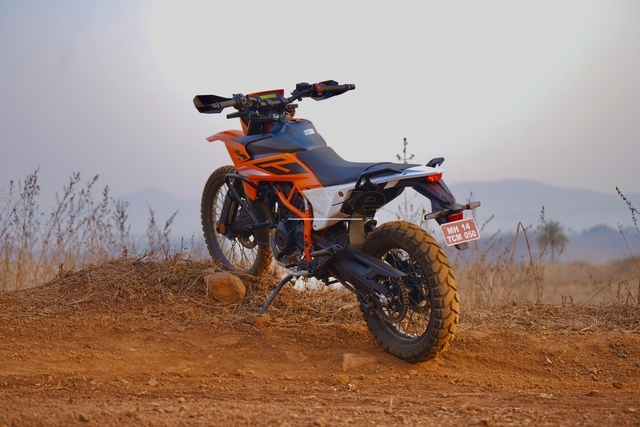
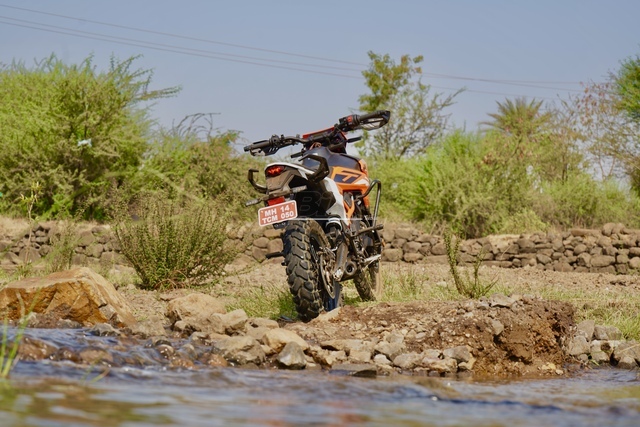
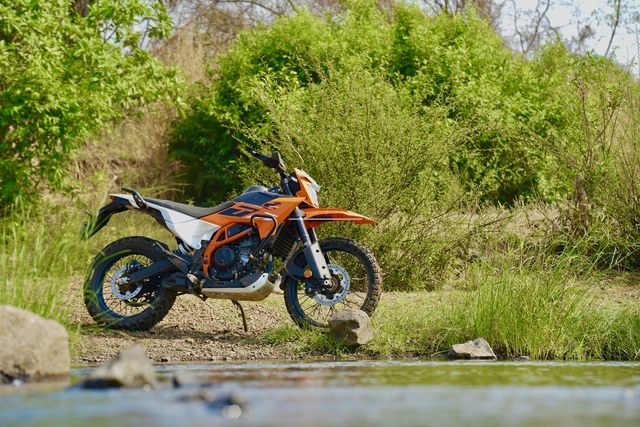
Watch the full video review here:
Also Read: KTM 390 Adventure Review


Leave a Reply